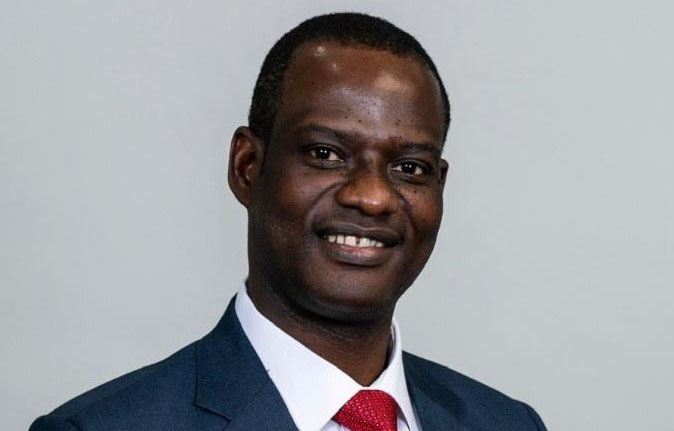BudgIT’s 2023 State of States Report: Rivers reigns again on fiscal performance ranking

- Anambra joins Lagos, Kaduna, Ebonyi in top 5; Zamfara, Bayelsa and Benue lead from bottom
BudgIT, a prime civic-tech organization leading the advocacy for fiscal transparency and accountability in Nigeria, has launched the 2023 edition of its annual States of States report themed Subnational Healthcare Delivery for Improved Economic Development.
This report, BudgIT’s signature analysis, assesses and ranks the fiscal performance of all 36 states from the most sustainable to the least sustainable. This year’s edition additionally spotlights the state of healthcare delivery for improved economic development at state levels.
For the 2023 edition, we maintained the five metrics for ranking all 36 states, where Index A examines states’ ability to meet Operating Expenses (Recurrent Expenditure) with only their Internally Generated Revenue. Index A1 looks at the percentage year-on-year growth of each state’s Internally Generated Revenue. Index B reviews states' ability to cover all operating expenses and loan repayment obligations with their Total Revenue (Internally Generated Revenue +Statutory Transfers + Aids and Grants) without borrowing. Index C estimates the debt sustainability of the states using four major Indicators. A. Debt as a % of GDP. B. Debt as a % of Revenue. C. Debt service as a % of Revenue, and D. Personnel Cost as a % of Revenue. Index D evaluates the degree to which each state prioritizes capital expenditure to its operating expenses (recurrent expenditure).
This year, the fiscal performance table—Index A—received a new entrant, Anambra, as Rivers retained its number one position, making it the 4th time in a row. However, Cross River lost its place in the top five and fell to the 9th position. Adamawa recorded the most impressive improvement as it moved ten places up to 23rd from its 33rd position the previous year.
The most drastic decline happened to Kebbi as it retrogressed 13 places downward on the fiscal performance ranking to the 28th position. Only two states, Lagos and Kaduna, generated more than enough IGR to cater to their operating expenses; Taraba, Katsina, Bayelsa, and Zamfara required more than seven times their IGR to manage their operating expenses.
Five states—Abia, Imo, Yobe, Zamfara, and Plateau—(the least ranked states on index B) did not raise enough total revenue (their combined IGR, federal allocations, and grants) to cater to their recurrent expenditure. This means these states resorted to borrowing to manage some parts of their recurrent expenditure and capital expenditure. The number of states that prioritized capital expenditure over recurrent expenditure doubled from the previous year to ten states. Zamfara and Plateau were new entrants in the bottom five positions on the overall fiscal performance table.
The cumulative revenue of the 36 states grew by 28.95% from N5.12tn in 2021 to N6.6tn in 2022. Together, the Internally Generated Revenue (IGR) of the 36 states appreciated by 12.98% from N1.61tn in 2021 to N1.82tn in 2022, denoting a strengthened domestic revenue mobilization capability. Nonetheless, the IGR to GDP ratio remained very low at 1.01%. The increase in IGR did not reflect across board as 17 states experienced a decline in their IGR from the previous year while 19 states recorded positive growth. Occasioned by a 49.2% increase in global oil prices, gross federal transfers rose by 35.68% from the previous year to N4.05tn, despite a 12.55% drop in crude oil production.
Cumulatively, states' reliance on transfers from the federal government increased from 58.4% in 2021 to 61.45% in 2022. Taken apart, at least 70% of the total revenue of 16 states comprised federal transfers, while 32 states depended on transfers from the federal government for at least 50% of their revenue.
The total expenditure of the 36 states stood at N8.2tn, 24.7% more than the N6.58tn spent in 2021. Save for three states—Anambra, Cross River, and Rivers—33 states had an increase in their total spending in the 2022 fiscal year. Commendably, not only did nine states exceed the UNESCO recommendation of allocating 20% of the annual budget to education, but 15% of the total expenditure for 17 states went to education. Regarding health, just two states, Sokoto and Jigawa, surpassed the Abuja Declaration recommendation of earmarking 15% of your total expenditure for improvement in healthcare delivery.
A broader look at expenditure revealed that a 19.26% increase in cumulative operating expenses of the 36 states was accompanied by a 28.54% increase in capital expenditure, year-on-year. Although 15 states are yet to implement the minimum wage of N30,000, the cumulative personnel cost of the 36 states grew by 13.44% to N1.75tn from N1.54tn the previous year. Similarly, overheads grew by 23.42% to N1.24tn in 2022.
The total debt of the 36 states increased by 13.89% from N6.37tn in 2021 to N7.25tn in 2022. From 2018, the year before most governors either assumed office for the first time or were re-elected, the cumulative debt stock of the 36 states grew by 45.89% from N4.97tn in 2018 to the current value. Broken down, domestic debt—which rose by 16.15% year-on-year—made up 72.5% of the total debt stock as of December 31, 2023.
Five states—Plateau, Bayelsa, Imo, Katsina, and Rivers—had a decline in their total debt stock from the previous year. Lagos, alongside Kaduna, Edo, and Cross River, have dollar-denominated debts in excess of $250m. Lagos’ foreign debt stock of $1.25bn surpassed the cumulative foreign debt stock of 24 states as of 31st December 2022, making it highly susceptible to exchange rate volatility. Without accumulating any additional dollar-denominated debt, the foreign debt stock of Lagos in naira increased from N560.03bn (using an exchange rate of N448 to $1) to N933.92bn (using an exchange rate of N747.1 to $1). Overall, except for Zamfara, which exceeded the recommended threshold for debt service to revenue ratio, and Cross River state, which surpassed the debt to revenue threshold, all other states remained within the recommended limits for debt to GDP, debt to revenue, debt service to revenue, and personnel cost to revenue ratio.
“To reduce their over-reliance on federal transfers, States need to broaden and diversify their tax base, which currently is predominantly PAYE-dependent. In light of the huge infrastructure deficit, states need to prioritise capital expenditure over recurrent, especially on areas that improve the ease of doing business, namely road, power, transport, digital and security infrastructure. The multiplicity of taxes, which puts inflationary pressures on the price of commodities, more importantly food, needs to be urgently addressed. Just as the state governments need to improve their capacity to accurately and consistently project their revenues and expenditures to improve service delivery outcomes, they need to establish robust consequence management regimes to deter corruption and ensure value for money.”, said Iniobong Usen, BudgIT’s Research and Policy Advisory Lead.
Moving on to Healthcare delivery, data from the latest Multiple Indicator Cluster Survey (MICS) and National Immunization Coverage Survey (NICS) shows that various health insurance programs of the different states need to be accelerated to cover more of the population as national and regional coverage was lower than 5% among men, women, and children. Very few states reported significantly higher coverage among some of the abovementioned groups.
Looking at the under-5 mortality rate, the Southwest region recorded the lowest figures at 48 deaths per 1,000 live births, while the Northwest had the worst regional record with 158 deaths per 1,000 live births. Across the country, Lagos had the lowest numbers, while Sokoto had the worst.
Within the Southwest, the survey showed that Lagos and Osun met the SDG target of no more than 25 deaths per 1,000 live births. Similarly, Ebonyi in the Southeast region met the under-5 SDG target. Other states must intensify efforts to reduce under-5 mortality rates for their citizens before the 2030 deadline.






